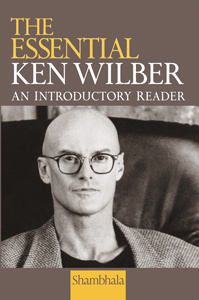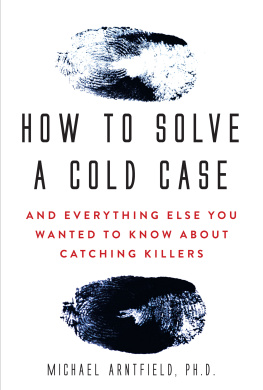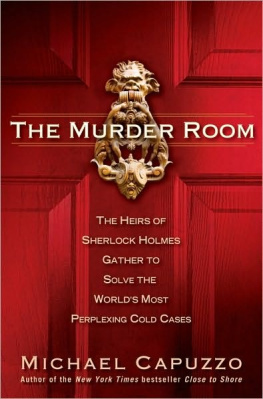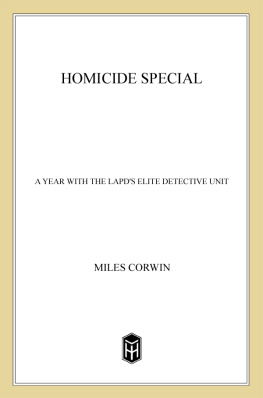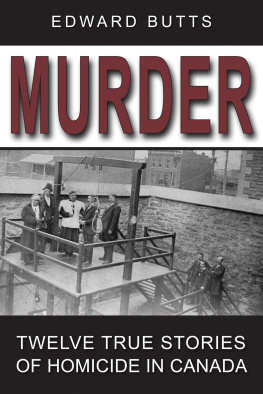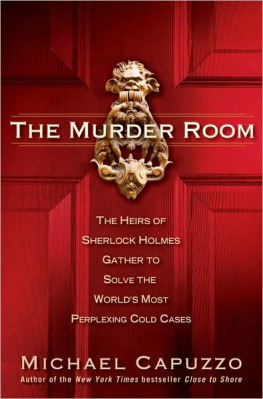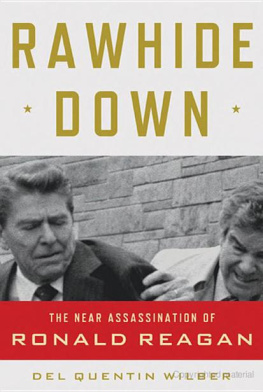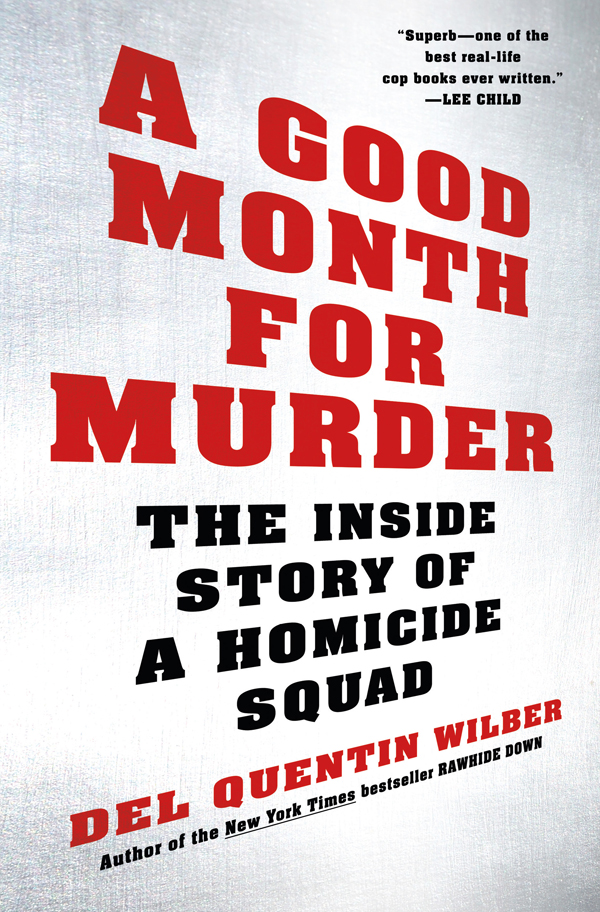Contents
Guide

The author and publisher have provided this e-book to you for your personal use only. You may not make this e-book publicly available in any way. Copyright infringement is against the law. If you believe the copy of this e-book you are reading infringes on the authors copyright, please notify the publisher at: us.macmillanusa.com/piracy.
To the men and women who toil in the heart of darkness so the rest of us dont have to
Police work is fueled by blood, sweat, caffeine, and mothers tears.
Edward T. Norris, former Baltimore police commissioner
SUPERVISORS
Captain George Nichols
Lieutenant Billy Rayle
Lieutenant Brian Reilly
M-10 SQUAD
Sergeant Tony Schartner
Mike Barnhardt
Joe Bellino
Ben Brown
Jonathan Hill
Billy Watts
M-20 SQUAD
Sergeant Trevel Watson
Andre Brooks
Mike Delaney
Paul Dougherty
David Gurry
Paul Mazzei
M-30 SQUAD
Sergeant Kerry Jernigan
Victoria Bracey
Mike Ebaugh
Jeff Eckrich
Eddie Flores
D. J. Windsor
M-40 SQUAD
Sergeant Joe Bergstrom
Jamie Boulden
Joe Bunce
Mike Crowell
Sean Deere
Allyson Hamlin
M-90 SQUAD
Sergeant Greg McDonald
Kenny Doyle
Spencer Harris
Wayne Martin
Marcos Rodriguez
Denise Shapiro

4:40 a.m., Monday, January 21, 2013
Stooping over the dead man, Detective Ben Brown notes a large bulge under the left eyebrow, most likely caused by a bullet that entered the back of the victims skull. The man is lying faceup, his half-open eyes staring vacantly into the freezing predawn darkness. Brown inspects the victims attire: thick black jacket, gray sweatshirt, gray pants, and spotless Timberland boots, one of which still has its leather tag. At least he died in new shoes, thinks Brown. Standing straight again, he sniffles and jams his hands deeper into the pockets of his black overcoat.
The investigators eyes trace two long rivulets of blood that run from under the mans head down the sloping road that wends through the large apartment complex. For a few moments, Brown stares at the blood, until his attention is drawn to a white plastic grocery bag thats been picked up by the whipping wind. As he watches, the bag flutters over the corpse, pirouetting in the glare of floodlights powered by hammering generators. The detective turns slightly to the right, shifting his focus to the broader scene: a single trash can, the back wall of one of the apartment buildings, a long metal fence bordering the access road.
From behind, Brown hears leather soles scuffing on concrete. A moment later hes joined by his sergeant, Tony Schartner, who comes to a stop by his left side.
Its f-f-fucking cold, says Schartner, who has a pronounced stutter.
Its cold to the bone, says Brown, his whispery voice almost lost in the wind.
The two men step back and watch an evidence technician photograph the victim. Brown is blinking hard against the pulses of incandescent light when a patrol officer approaches. The officer tells Brown that the area has been secured and no witnesses have come forward. He points to his right, past the fence, and says he found the victims parents standing just beyond the police tape. Pulling out a notebook, he provides Brown with the dead mans name and age.
Brown thanks the officer and jots down the information in his own notebook. A name and the presence of next of kin are the first pieces of good news the detective has received since being awakened at 3:15 a.m. and alerted to the homicide his homicidein Forestville, a working-class neighborhood in Prince Georges County, Maryland, on the outskirts of Washington, DC. The fatal shooting, he was told, occurred just fifteen or so minutes earlier on the 3300 block of Walters Lane. Brown knows the neighborhood well: he has investigated at least eight murders in the area, and none has been easy to solve. Why should it be otherwise? Walters Lane, a jumble of boxy apartment buildings and strip malls, is governed by the code of the street Do not snitch and police officers spend an inordinate amount of time simply trying to find witnesses willing to give their real names.
As he drove to the scene, Brown thought about one of his first homicides in the neighborhood: the shooting of a female drug courier in her sports car. In the weeks following the crime, Brown had developed her dealer as a suspect but had been unable to turn up even a single good witness. Seven years later, his most vivid memory of the case is that of police officers struggling to pry the three-hundred-pound victim from behind the wheel of her car. Brown has never forgotten the lesson of that night: Not even the dead cooperate on Walters Lane.
Trim and fit, with slicked-back salt-and-pepper hair and deep crows-feet framing his hazel eyes, the forty-four-year-old detective is an Eagle Scout, the father of two Eagle Scouts and a Boy Scout, and a faithful Catholic. He believes that he does Gods work, and his right bicep bears a tattoo of the archangel Michael, patron saint of police officers. But a decade of murders has hardened him to deatha not uncommon occurrence in his professionand he rarely feels much empathy for his victims. In truth, its been a year and a half since a homicide really got to him: in the boiling summer of 2011, a Washington, DC, police officer shot and killed his mistress in a park and left their eleven-month-old daughter to roast to death in her mothers Kia. After conducting an experiment that proved that the interior of the car had reached 125 degrees, Brown could no longer control his emotions, and he broke down crying.
Most homicide cases, however, do not involve such innocent victims, and now, as he stands at the scene, Brown suspects that this one is likely to be far more typical. After all, what kind of person would be out on the street at such an hour in such a dangerous place? Its fucking Walters Lane, he thinks . Just one shit bag killing another.
As Brown and Schartner watch the evidence technician take photographs and inspect the scene, they are joined by Detective Jonathan Hill, a rookie homicide investigator who has been canvassing neighbors and talking to the responding police officers. Hill tells Brown that no one has admitted to seeing anything or has provided any useful information. He then steps around Schartner for a closer look at the body. The rookieknown for his sarcastic witfrowns, clears his throat, and speaks in a mock-anchorman voice:
Here is yet another young black man who voted for our beloved president and now, sadly, wont be able to attend his inauguration.
The two veterans smile: in just seven hours, Barack Obama is scheduled to deliver his second inaugural address on the west steps of the U.S. Capitol. As white men, Brown and Schartner could never get away with Hills joke. But Hill, an African American who is the son of one of the DC police forces first black officers, is quick to find humor in almost any situation.
All three detectives are fairly certain that their victim had no intention of attending the ceremony that will take place just seven miles from where they are standing. A line drawn from the crime scene in suburban Maryland to the inaugurations majestic venue would cut through neighborhoods both run-down and quaint, busy avenues and quiet residential streets, the polluted Anacostia River and the tony row houses on Capitol Hill. At one end of that short distance there is hopethe nations first black president will once again take the oath of officewhile at the other is a familiar and ignominious reality: yet another black man has been murdered on the streets of a crime-plagued neighborhood.





